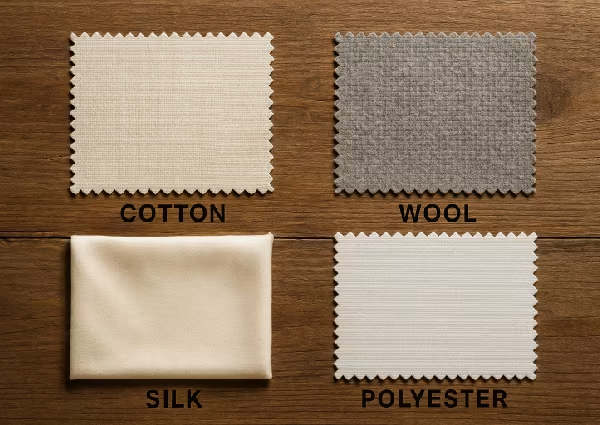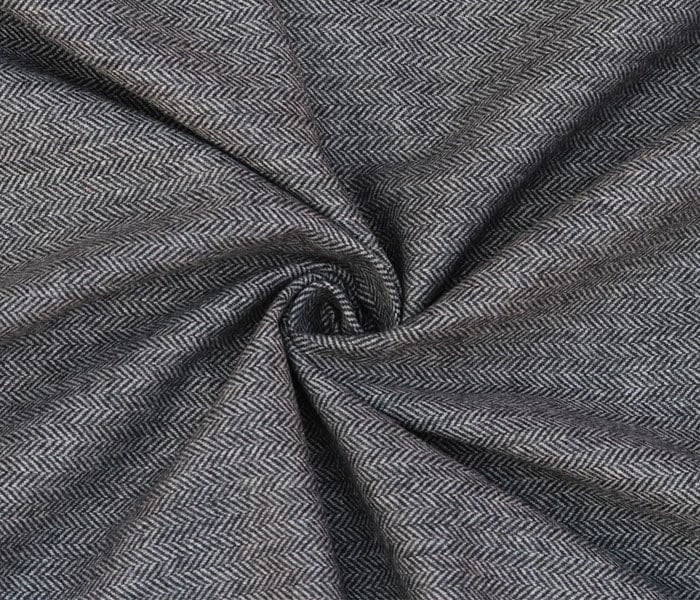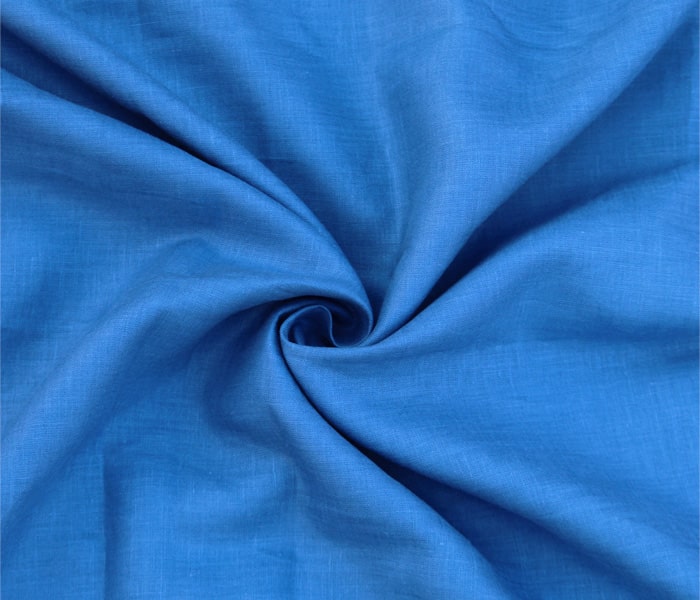What is Fabric and Its Types? Complete Guide to Natural & Synthetic Fabrics

Types of fabric, Style, comfort and life are linked by one essential ingredient the fabrics. From clothes that we put on to the bedding we rest on to the sofas at our homes, fabrics all around us. But what is exactly fabric and why is it relevant to the fashion industry as well as our everyday day lives?
This comprehensive guide we’ll look at the significance of fabrics and its origins, the process by which it’s created, the main varieties (natural as well as synthetic) distinct characteristics as well as its numerous uses. In the final chapter the book, you’ll have an knowledge of the fabric and in a position to select the appropriate fabric for decoration for your home, or even industrial usage.
Understanding Fabric: Definition and Importance
The simplest definition of material is simply a pliable material created through the interlacing of fibers. They can be made from natural materials such as wool, cotton, or synthetic, like nylon and polyester. The fabric is the basis of the industry of textiles and is the primary ingredient in a variety of merchandise, like furniture, bedding, clothing bags, as well as industrial machinery.
Textile Definition of Fabric
The term “textile” originates from the Latin word textilis which means “woven.” Originally, it was used to refer only to the woven fabric. Nowadays, however the term “textiles” can refer to yarns, fibers, textiles, as well as finished goods. Textiles don’t have to be to be weaved, it could be knitted, bonded or produced from films and foams.
Therefore, all fabrics are fabrics, however there are a few exceptions to the definition of a textile. Fabric refers to an item that has been processed and is ready to be used to be used in upholstery or clothing, and “textile” can mean raw fibers, semi-finished yarns or even raw too.
Difference Between Fabric and Textile
-
Textile is a broad term that refers to yarns, fibers, and other fabrics.
-
Fabric is a specific term used to describe fabrics made of yarn or fibers that are ready to be utilized in various fabrics or garments.
As an example, a cotton yarn roll is an item of textile. However, when it is woven into a cloth it turns into material.
How Fabric is Made
The manufacturing of fabrics usually involves these actions:
-
Fibers is the smallest of components that resembles hair in its form and.
-
Spinning Fibers are spun into yarn.
-
Knitting or Weaving yarns are interlaced to make fabric.
-
Finishing Fabrics are treated (dyed and printed, or and then softened) in order to increase the characteristics.
This change from fibers that are raw into fabric is the reason for unlimited possibilities for the realm of fashion and lifestyle products.
Types of Fabrics
Fabrics can be broadly classified into two types: natural fabrics (derived from animal or plant sources) as well as synthetic textiles (man-made made using the use of petrochemicals). There are fabrics that are mixtures that combine both kinds for maximum durability and comfort.
1. Natural Fabrics
Natural textiles are composed of animal fibers, or mineral fibres. They’ve been in use since the beginning of time and continue to be the base of clothes for human beings and other domestic textiles.
Cotton

Cotton is among the most commonly utilized natural material throughout the world. It’s breathable, soft, and versatile, ideal for clothes as bedding, upholstery, and clothing.
Properties of Cotton:
-
The lightweight and breathable material is light.
-
It is able to absorb moisture quickly
-
Soft texture suitable for sensitive skin
-
Fabrics can be weaved into coarse or fine cloths
Common Uses:
-
T-shirts, shirts, dresses, undergarments
-
Covers for pillows, bed sheets and curtains
-
Medical supplies like bandsages
Its worldwide popularity is due to its convenience and flexibility that makes it a must-have in clothing and in the homes of all kinds.
Wool

Originated from sheep’s fleece as well as other animal species (like goats and alpacas), wool is extremely warm, elastic and durable.
Properties of Wool:
-
Fantastic insulation. Keeps you warm even in the winter.
-
Naturally flexible and tough
-
Wrinkle-resistant
-
It is able to absorb dyes very well.
Common Uses:
-
Winter wear: coats, blazers, suits, sweaters
-
Upholstery, carpets, bedding
-
The use of technology in insulation as well as felts
High-end woolen textiles, like Merino and cashmere–are often associated with luxury and a refined style.
Silk
Silkworms are the source of silk. silk is among the most well-known and luxurious materials. The natural sheen and silky texture makes it an emblem of luxury.
Properties of Silk:
-
Soft and lustrous
-
The weight is light, but the strength is strong.
-
Excellent drape quality
-
Controlling temperature – cool in the summer and warm in winter
Common Uses:
-
Dresses for evening, tie, high-end blouses, sarees
-
Upholstery and bedding of the highest quality.
-
Accessories and decorative items
Silk remains the preferred fabric for the world of fashion and interior design..
Linen

The flax plant is the source of linen, linen is one of the oldest fabric–used in the past since Egypt. It’s extremely breathable and perfect for climates with high temperatures.
Properties of Linen:
-
Very absorptive
-
Natural cooling result
-
It is stronger than cotton.
-
It develops a soft sheen through usage
Common Uses:
-
Dresses for the summer season, shirts skirts, trousers
-
Tablecloths, bed linens, upholstery
-
Decorate with art canvas and products
Linen mixes the practicality of linen with the elegant design and is a popular choice for both interior and fashion.
2. Synthetic Fabrics
Synthetic textiles are made by humans created by chemical process, mostly using petroleum derivatives. They’re affordable, flexible and extremely durable.
Polyester
Polyester is one of the most frequently utilized synthetic fabrics all over the world.
Properties of Polyester:
-
Sturdy and long-lasting
-
It is resistant to shrinking and wrinkling.
-
Rapid drying and moisture-wicking
-
Cost-effective and simple to manufacture in mass quantities
Common Uses:
-
Activewear and sportswear
-
Uniforms, dress, and jackets
-
Curtains and other home textiles, such as covers for beds
The popularity of polyester is due to the fact due to its high-quality and affordable.
Nylon
In the 1930s, nylon is the very first completely synthetic material.
Properties of Nylon:
-
Strong and elastic
-
Resistant against abrasion as well as mold and chemical abrasion.
-
The lightweight and rapid drying
Common Uses:
-
Swimwear, activewear, hosiery
-
Tents, bags, ropes
-
Industrial applications and car parts
It is still a vital component of fashion as well as technological textiles.
Acrylic
Acrylic is an synthetic alternative to wool that is made of plastic fibers.
Properties of Acrylic:
-
Light and soft
-
It is warm and resembles wool.
-
Resistant against moths and sun harm
-
Simple to clean and maintain
Common Uses:
-
Jackets, sweaters, socks
-
Fabrics and blankets for upholstery
-
Outdoor textiles
Acrylic is a popular material for low-cost winter clothes as well as household items.
3. Blended Fabrics
Blended fabrics blend synthetic and natural fibers in order in order to create an equilibrium of softness and toughness.
Examples include:
-
Polyester-cotton (cotton and polyester): Soft, flexible, and wrinkle-resistant.
-
Blends of wool: Blend of wool and synthetic fibers to provide the warmth and toughness.
-
Lycra mixes: A blend of Cotton and Elastane to create stretchy fabrics such as sporting wear and leggings.
Blends are more and more used in textiles of the present due to their flexibility and affordability..
Characteristics of Fabric
Each type of fabric is unique in its features that impact the usage and its performance.
-
Texture Soft, smooth, coarse rough (affects aesthetics and comfort).
-
Breathability The fibers of linen and cotton permit air circulation. Polyester holds warmth.
-
Durability Polyester and wool are more durable; silk is fine.
-
Moisture absorption The cotton and linen soak up sweat, while synthetics dry quickly.
-
Elasticity Wool and nylon can stretch easily, whereas linen is rigid.
The factors that affect the fabric that is suitable to be used in a specific situation–from the summer clothes to heavy-duty upholstery.
Uses of Fabric in Everyday Life
Fabrics aren’t just used intended for clothing, their functions are innumerable:
-
Apparel: Shirts, trousers, dresses, coats, sportswear.
-
Home Textiles: Curtains, bedsheets, upholstery, carpets.
-
Industrial Textiles: Safety gear, car interiors, parachutes.
-
Medical Applications: Bandages, surgical gowns masks.
From style to practical Fabric is everywhere.
Fabric Beyond Textiles
The term “fabric” also applies to other areas of the world, including:
-
Within technological terms, “network fabric” is the name used for the technology that links devices and servers.
-
When it comes to the field of engineering, “fabric of materials” is the term used to describe the structure layout that ensures durability.
-
In media and in culture We talk about”the “fabric of society.”
Fabric isn’t only a material, but also a symbol of connections, structure and the ability to withstand.
Conclusion: Choosing the Right Fabric
Your choice of fabric is contingent on preferences, the environment, style, and your budget. If you’re looking for lightweight clothing for summer, choose either linen or cotton. To keep warm, go for wool, or even acrylic. If you want durability and minimal maintenance nylon and polyester are top of the line. In terms of luxury and class silk and fine wools are unbeatable.
Understanding the characteristics of fabric is the initial step towards making the right choices for the realm of fashion, decor for your home as well as in the business world. With knowledge of the different types of fabrics and their properties You can select fabrics that look great but are also able to perform everyday.
